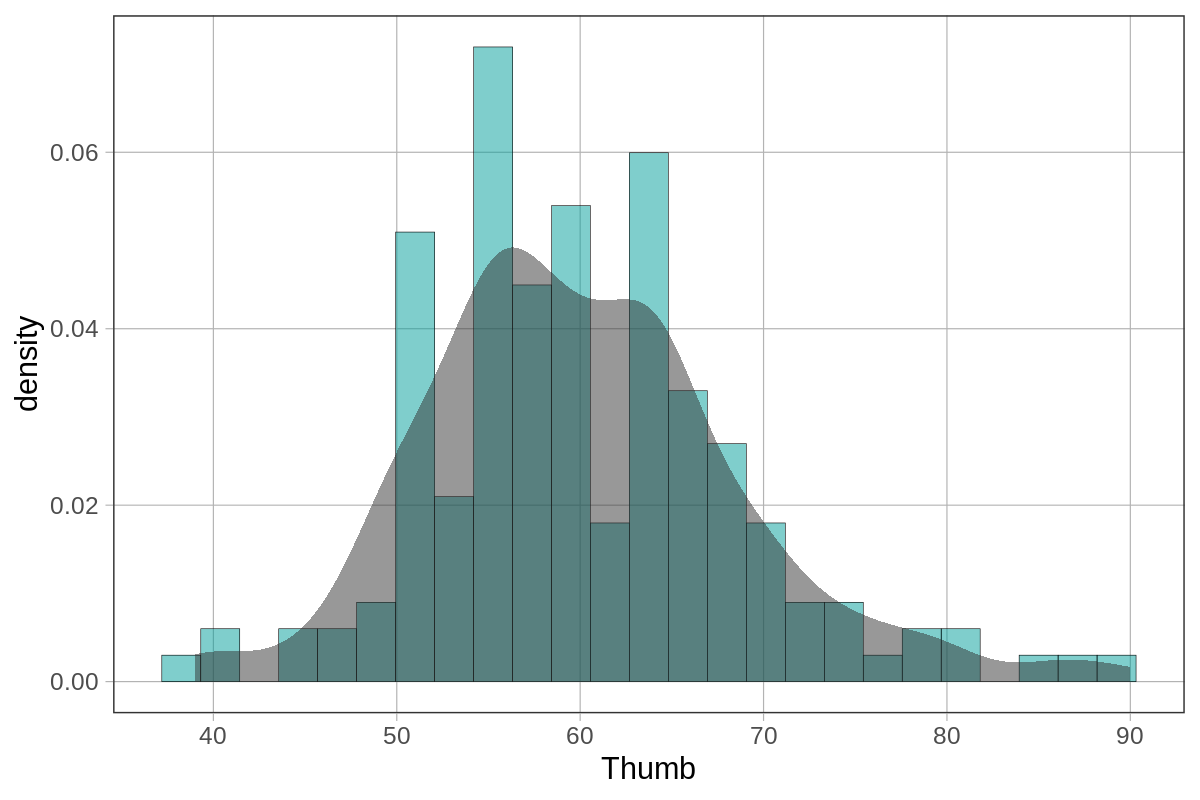gf_density()
The gf_density() function will overlay a density plot onto a density histogram (i.e., gf_dhistogram(), not gf_histogram()). The density plot is a smoothed out version of the distribution. They can be helpful when you want to get a better idea of the approximate shape of the distribution (e.g., normal, bimodal, skewed, uniform).
 Example 1:
Example 1:

Example 1:
# A density plot chained onto a density histogram
gf_dhistogram(~Thumb, data = Fingers) %>%
gf_density()
Example of output from running the code above:


Example 2:
# A density plot with color arguments, chained onto a faceted density histogram
gf_dhistogram(~Thumb, data = Fingers, fill = "grey", color = "black") %>%
gf_facet_grid(Gender ~ .) %>%
gf_density(color = "red", fill = "blue")
Example of output from running the code above:

Related Articles
gf_histogram()
The gf_histogram() function will create a frequency histogram for a quantitative variable. This means it will show the number of cases observed in the data for each value of the variable. (See gf_dhistogram() for information on density histograms). ...gf_dhistogram()
The gf_dhistogram() function is very similar to the gf_histogram() function, however, the difference is that gf_dhistogram() will create a density histogram for a quantitative variable. This means it will show the percentage of cases for each value ...gf_facet_grid()
The gf_facet_grid() function will create separate plots for each group of a categorical variable. It can be chained onto plots such as gf_histogram(), gf_jitter(), and gf_bar(). Example 1: # Density histogram of Thumb faceted by Gender gf_dhistogram( ...density
In a histogram, density is roughly the same as proportion.gf_lm()
The gf_lm() function overlays the best-fitting regression line on a scatter plot when chained onto gf_point(). Example: # adds a regression line gf_point(Thumb ~ Height, data = Fingers) %>% gf_lm( color = "orange", size = 2 )